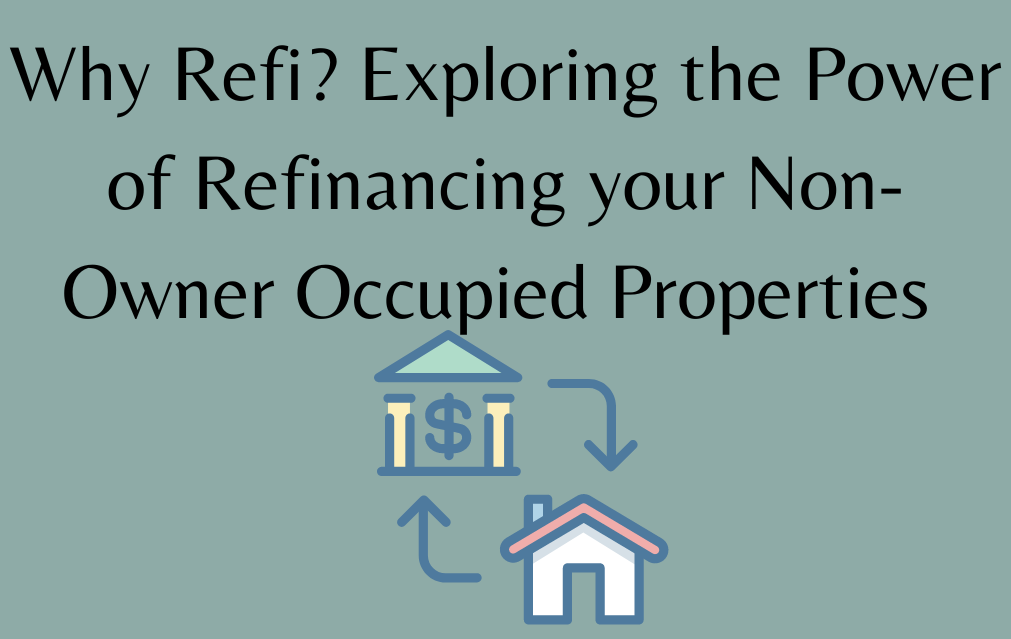Title: Exploring the Power of Refinancing: Transforming Non-Owner-Occupied Properties
Introduction: Refinancing isn’t just reserved for homeowners looking to lower their mortgage rates. Real estate investors can also harness the potential of refinancing to optimize their non-owner-occupied properties. In this article, we’ll delve into the compelling reasons to consider refinancing and the possibilities it can unlock for your investment portfolio.
1. Lower Interest Rates, Higher Profits: One of the primary motivations for refinancing is securing a lower interest rate. By refinancing your non-owner-occupied property at a lower rate, you can reduce your monthly mortgage payments, increase cash flow, and ultimately bolster your profits.
2. Improved Cash Flow: Refinancing can also extend your loan term, spreading out your payments over a longer period. While this might result in paying more interest over time, it can significantly decrease your monthly expenses, enhancing your property’s cash flow.
3. Unlock Equity for Reinvestment: Refinancing allows you to tap into the equity you’ve built in your property. By taking out a cash-out refinance, you can access funds that can be reinvested in additional properties, renovations, or other investment opportunities.
4. Renovation and Value Enhancement: Refinancing can provide the capital needed for property renovations and improvements. Increasing the property’s value through upgrades can lead to higher rental income or resale value, ultimately benefiting your investment returns.
5. Consolidating Debt: If you have multiple loans or debts, refinancing can be a strategic move to consolidate them into a single, more manageable payment. This simplifies your financial structure and potentially reduces overall interest expenses.
6. Shifting Loan Terms: Refinancing allows you to shift from an adjustable-rate mortgage to a fixed-rate mortgage or vice versa. This decision can be based on your long-term investment strategy, risk tolerance, and market trends.
7. Enhanced Portfolio Diversification: By refinancing and accessing funds, you can diversify your investment portfolio by acquiring properties in different markets or property types. This can mitigate risk and contribute to overall portfolio stability.
8. Tax Benefits: Refinancing costs and interest payments may offer tax deductions, particularly for investment properties. Consult a tax professional to understand how refinancing could impact your tax situation.
9. Preparing for Market Opportunities: Timing is crucial in real estate. Refinancing strategically can position you to take advantage of market opportunities, such as acquiring properties during downturns or when prices are favorable.
10. Adaptation to Changing Goals: As your investment goals evolve, your financing needs might change as well. Refinancing provides the flexibility to adapt to new investment strategies and capitalize on emerging trends.
Conclusion: Refinancing isn’t a one-size-fits-all solution, but it’s a powerful tool that can rejuvenate your non-owner-occupied property investments. From lowering interest rates and improving cash flow to unlocking equity for reinvestment and enhancing portfolio diversification, refinancing holds immense potential for real estate investors. However, like any financial decision, it requires careful consideration, analysis, and consultation with professionals who can help you align your refinancing strategy with your long-term investment goals.


